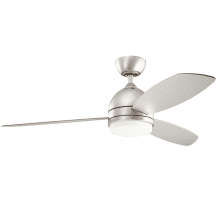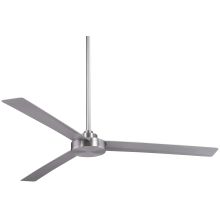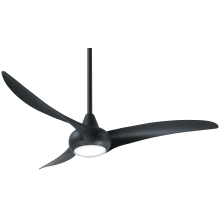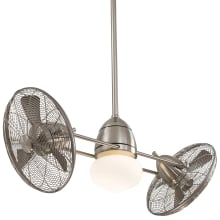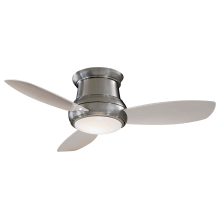How to Choose A Ceiling Fan
Find the perfect ceiling fan by following the steps listed in this guide.
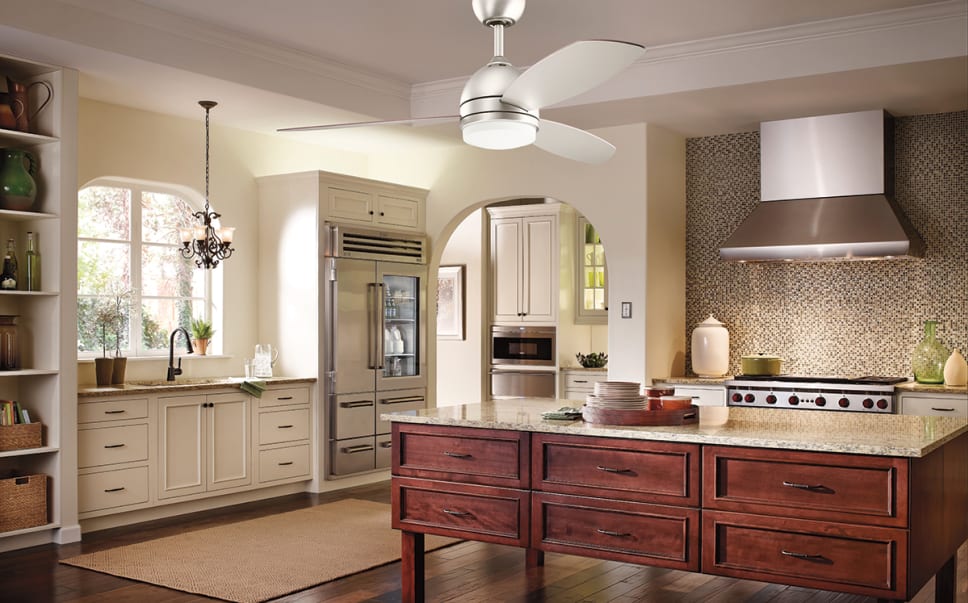
Learn how to find the right ceiling fan for your home, both indoors and outdoors. Learn what size you have space for, the type of motor for the task, and how to make sure you get the right type for your ceiling height and angle.
Find the answers you need to buy the perfect ceiling fan for your home.
Fan Type
Determine the right fan mounting style and features to meet your needs and fit your space.
Downrod Included: Great for high ceilings or vaulted ceilings, these keep the fan blades at an effective angle to circulate air when the height or slope of a ceiling or other design features might otherwise be in the way.
Flushmount / Hugger: Also called snugger. Best fit for standard height ceilings (8-9 ft) because it keeps the fan blades safely above the height of the average person. Shop Hugger Fans
Light Kit Included: Wonderful for adding extra light to a room. Many fans will come with the light kit already assembled, while others will have the light kit as an installation option. Shop Fans with Light Kits
Specialty: Excellent for restaurants or places of business. These models are not the traditional fan style and will have either an characteristic, artistic design, or a specific work function that sets it apart.
Ceiling Fan Size
What Size Ceiling Fan Do I Need For A Room?
To find the size that will best fit, you’ll need to know the square footage of the room. All you need to determine the square footage is some basic measurements and a simple formula.
Room’s width (feet) x Room’s length (feet) = Room’s Square Footage (sq. ft.)
Use this formula to verify the proper size ceiling fan for your room or outdoor seating area.
- Rooms up to 75 sq. ft. — 29-39 inch diameter
- Rooms 76-144 sq. ft. — 36-42 inch diameter
- Rooms 145-225 sq. ft. — 44 inch diameter
- Rooms 225-400 sq. ft. — 50-54 inch diameter
What size ceiling fan do I need for outside?
Outdoor ceiling fans should typically be at least 52 inches in diameter. Anything smaller than that may not have the capacity to move enough air around. Outdoor fans can measure up to 70 inches in diameter.
NOTE: Ceiling fans should be at least 7 feet from the floor.
Ceiling Fan Terminology
Vaulted Ceiling: Higher ceilings, usually angled more than a standard ceiling, can make fan selection slightly more complicated. If you have a vaulted ceiling, make sure the ceiling fan you want has a sloped ceiling adapter available.
ENERGY STAR®: Remember that fans with the ENERGY STAR® stamp are rated as being more energy efficient. Shop all Energy Star fans
Blades: Always check that the blades are included with your fan purchase. Some fans have many blade options.
Blade Pitch: The angle of a single blade. Measured in degrees.
Amperage: The electricity needed to run the fan. Measured in AMPs.
Motor Size: Measured in MMs. The higher the number, the more powerful the fan.
Cubic Feet Per Minute: The total airflow the fan produces at top speed. Measured in CFM.
Revolutions Per Minute: The total number of rotations in one a particular minute, or the fan’s speed. Measured in RPMs.


